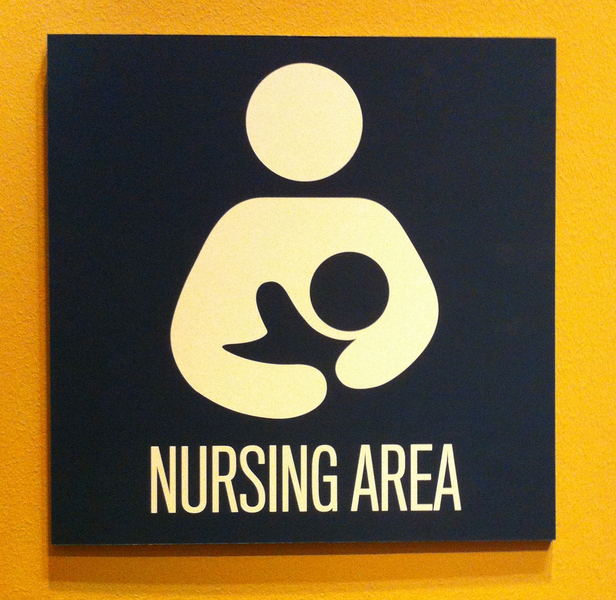Retailers have begun to ration infant formula, as the supply is hovering above 50% out-of-stock in several states. Due to supply chain disruptions, recall of products due to pathogen contamination, and inflation, some pharmacies are limiting purchase to three units per customer. This has caused a shockwave among parents of infants.
Breastfeeding is the natural alternative to commercial infant formulas. While this will not alleviate the present panic felt by formula-using parents today, let’s take the long view on this topic to encourage proactive infant nutrition and safety in the future.
Breastfeeding promotes positive health outcomes, both physical and mental. The practice is economical, safe and less timing consuming than preparing infant formula which requires a clean water source and sterilized feeding equipment.
Here are some practical breastfeeding bullet points to consider:
- No special equipment required.
- No mixing of powders means no formulation errors.
- Packable for ease of travel.
- Does not need a kitchen.
- Does not need clean water.
- Does not need sterilization of equipment
- Is cheaper than commercial formulas
- Parents are not tempted to dilute to save money
- Convenient and quick
- Readily available
- Does not spoil
- Breastmilk is not contaminated with pathogens.
- Breastmilk does not have a "use by" or expiration date.
The health benefits to the infant are many:
- Provides colostrum which contains maternal antibodies to fight infection.
- Improves infant immunity.
- Provides beneficial gut bacteria to the infant microbiome.
- Provides sugars needed to sustain the infant microbiome.
- Easily digestible
- Reduces infant ear infections caused by bottles
- Does not cause tooth rot due to "bottle mouth."
- Breastmilk nutrients are highly available and specific to the needs of human infants.
- Reduces swallowing of air while nursing and lowers rate of infant colic and gastric distress.
Benefits for Mom include:
- Releases oxytocin which helps constrict the uterus back to pre-pregnancy size.
- Calories needed to produce milk helps Mom lose weight.
- Mom gets to eat more calories without weight gain.
- Oxytocin release gives a feeling of well-being to the nursing mother.
- Allows mother and baby to lie down or use different comfortable positions to nurse.
- Nursing mother can rest or sleep during feedings.
- Skin-to-skin contact fosters a bond between mother and child.
Invented by a pharmacist, Henri Nestle in 1867, infant formula was sold as a nutritious alternative to mothers’ milk since milk from cows, ewes or goats does not adequately nourish human infants. After World War II, our culture and perceptions of motherhood changed and infant formula was considered the scientific, modern way to feed a baby. Women who breastfed were shunned as backward and immodest. The fetishizing of women’s breasts as sexual objects for male pleasure pushed women to scorn breastfeeding as "ruining their figures."
The World Health Organization (WHO) considers breastfeeding more nutritious than feeding infant formula. A feud between the WHO and infant formula manufacturers harkens back to the 1970s. During this decade, formula made with contaminated water or equipment caused diarrhea and the deaths of infants in the developing world. Cost was also an issue for poor families everywhere. Mothers would water down the formula to make it last longer. This resulted in malnourished babies with stunted growth or arrested cognitive development. Today, the WHO is still pushing back against infant formula manufacturers who use social media and influencers to target women and boost sales, undermining the agency’s efforts to promote breastfeeding.
 Today, due to the shortage of infant formula in the U.S., doctors are warning parents not to dilute the powdered formulas beyond the recommended rates. Nutritionists are also asking parents not to make their own formula. Unfortunately, once you commit to feeding infant formula, breast milk dries up and mothers lose that option.
Today, due to the shortage of infant formula in the U.S., doctors are warning parents not to dilute the powdered formulas beyond the recommended rates. Nutritionists are also asking parents not to make their own formula. Unfortunately, once you commit to feeding infant formula, breast milk dries up and mothers lose that option.
Yes, there are some downsides to breastfeeding: nipple soreness, milk letdown in public settings, issues of modesty in public, work schedule incompatibility, mobility issues, and cultural bias. But given our present situation, how many mothers wish they now had this option? Women should not have to feel ashamed or immodest when they nurse their baby. They should have the support of their partners and families. Employers and governments should enact policies which encourage and promote breastfeeding for at least the first 6 months of life, the age when the American Academy of Pediatrics recommends beginning the feeding of solids to infants. If we eliminate abortion as an option shouldn’t we logically assist mothers in caring for their infants? We need to encourage breastfeeding culturally, economically and politically for the health and safety of the next generation.
There are many more reasons why mothers should breastfeed. If you would like to read more, click these links from the CDC, WHO, and UNICEF.

